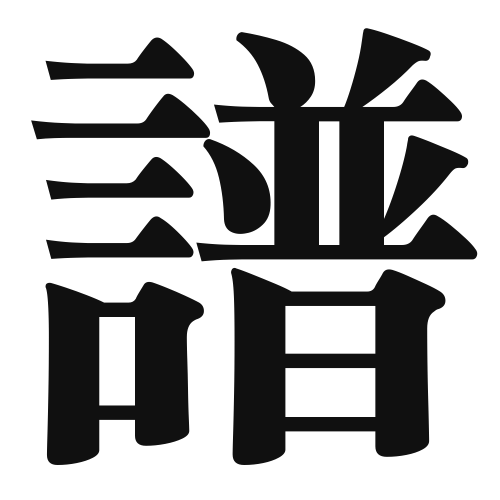1. Overview of Meaning
The kanji “譜” (fu) primarily means “score” or “musical score.” It refers to a written representation of music, indicating how it should be played or sung.
2. Formation and Radical
The kanji “譜” is a compound character, formed by combining the radical for “speech” (言) and the character “普” (pu), which means “universal” or “general.” This combination suggests the idea of a universal language or communication through music.
The radical of “譜” is 言 (gen), which relates to speech and language, emphasizing its connection to musical expression.
3. Examples of Usage
Common words and phrases that include “譜” are:
- 楽譜 (gakufu) – musical score
- 譜面 (fumen) – sheet music
Example sentence in daily conversation:
「この曲の楽譜を持っていますか?」 (Kono kyoku no gakufu o motteimasu ka?) – “Do you have the score for this song?”
4. Synonyms and Antonyms
Similar kanji with related meanings include:
- 楽譜 (gakufu) – specifically refers to a musical score.
- 音符 (onpu) – refers to musical notes, which are the symbols used in the score.
Antonyms include:
- 無譜 (mufu) – meaning “without a score,” indicating a lack of written music.
5. Cultural and Historical Background
The kanji “譜” has significant ties to Japanese culture, particularly in the context of traditional music and arts. It is often used in discussions about music education and performance.
Proverbs and idiomatic expressions that include “譜” may not be very common, but the concept of music and its notation is deeply embedded in Japanese cultural practices, such as in the performance of traditional instruments like the shamisen and koto.
